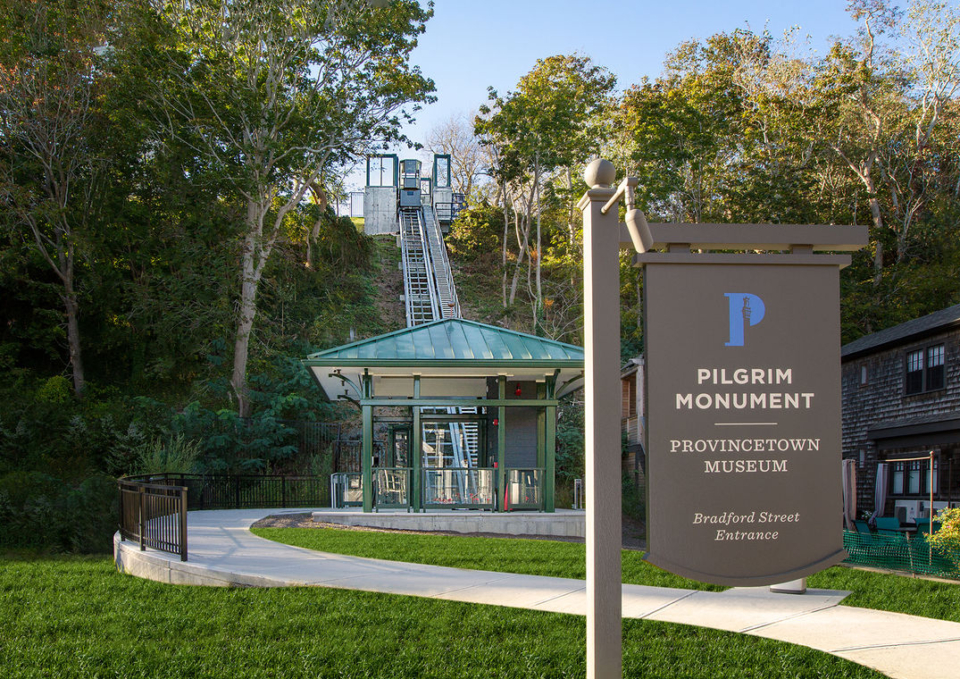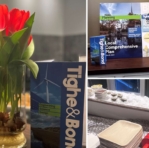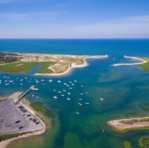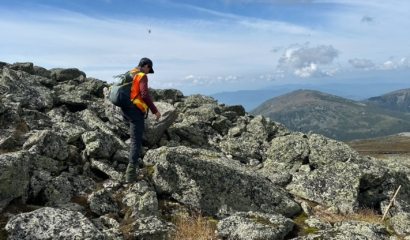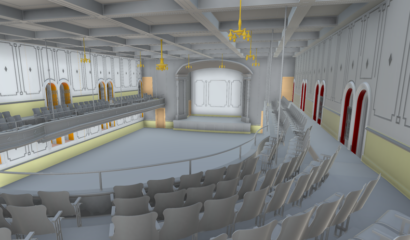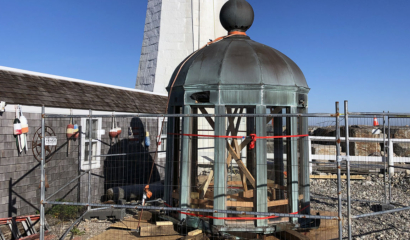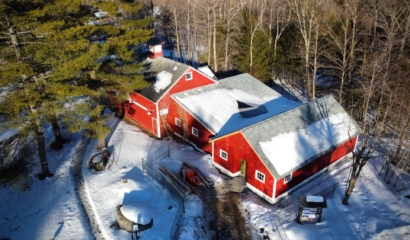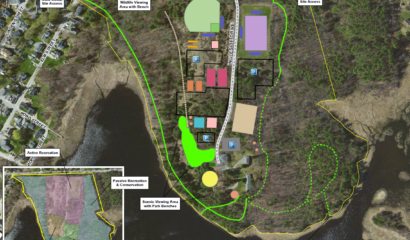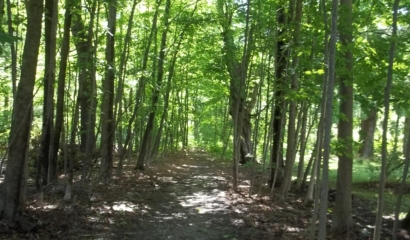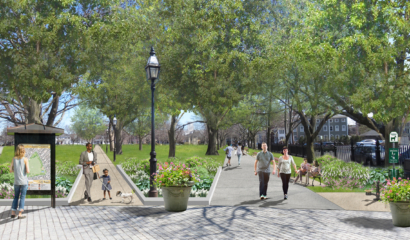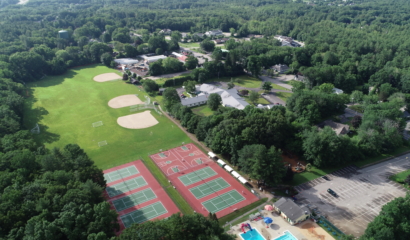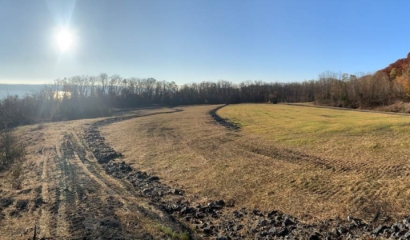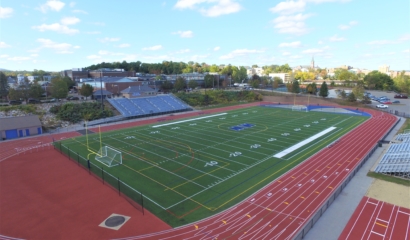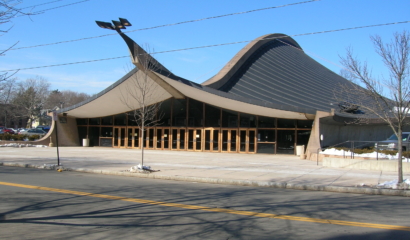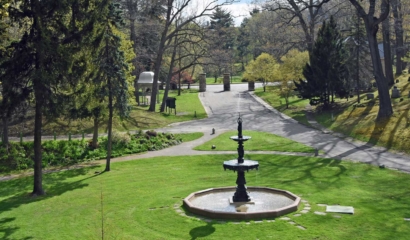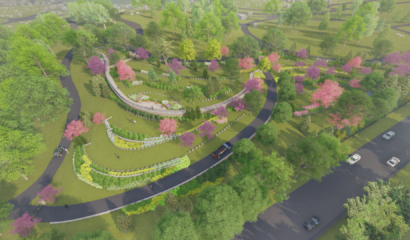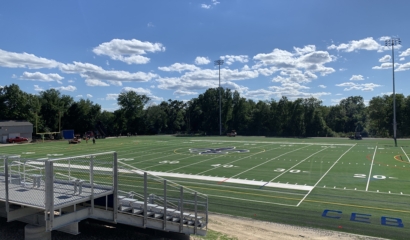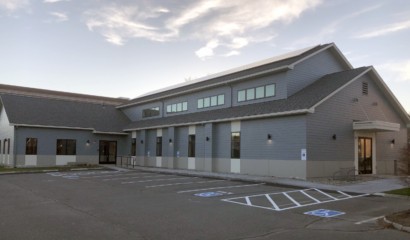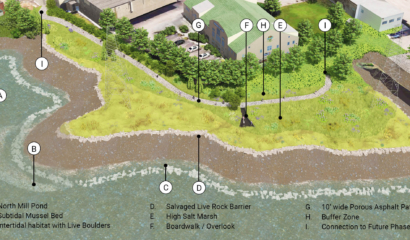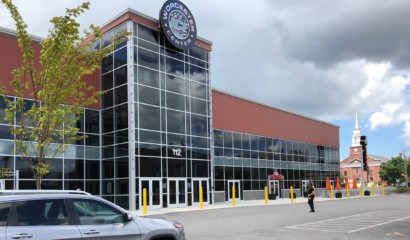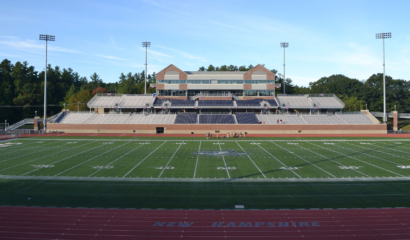Inclined Elevator Connects Historic Monument to Downtown
Watch the full video on our Vimeo page.
The Pilgrim Monument and Museum (PMPM) is Cape Cod’s oldest cultural institution and the symbol of Provincetown. Rising 350 feet above sea level, the Monument was built in the early 1900s to commemorate the landing of the Mayflower pilgrims and signing the first governance document in the New World – the Mayflower Compact.
The monument is located on the steep High Pole Hill, which acts as a visual and physical barrier to the monument and museum. The isolation from downtown and the lack of accessibility have bothered both locals and tourists, causing confusion and preventing the back-and- forth foot traffic between the busy downtown and the monument. With 2020 marking the 400th anniversary of the pilgrims’ landing, the PMPM Trustees decided to move forward on a grand plan to connect the PMPM to the rest of the town as an ongoing legacy of the historic site.
Tighe & Bond (work performed as Coastal Engineering Co. prior to acquisition) served as Engineers of Record for the design and construction of a custom single tram system inclined elevator that will ferry passengers between the museum site and Commercial Street in downtown Provincetown. The tram runs on a track between two 20 ft by 20 ft ADA-compliant pavilions at a speed of approximately 200 feet per minute. It will be able to transport up to 18 passengers in about two minutes.
Our engineers developed site/civil design for the grounds, structural design for the rail support foundation system, and assisted with the permitting process. The planning process started with assessing the environmental aspects. The outer Cape surficial geology is essentially a giant sand dune formed from the post glacial deposition of sand and silt from the last advance and retreat of the ice sheet. As such, slope stability and the integrity of the rail support structure were the main considerations of the project.
Helical piles, installed about 45 ft deep, reinforce the loose sand and increase the global stability of the site. There are four helical piles comprised of a lead section with three helix bearing plates followed by plain 2-7/8 inch diameter extension pieces. They are installed at an angle, serving as tiebacks for the tension load from the mechanism itself. A pair of helicals down the rails approximately every 12 feet on center act as the frames to hold up the rails in between. Both the platform foundation and the rail ties are supported on helicals as well. Accurate X, Y, and Z placement of pier supporting the tram rails was critical for the success for the design and construction of the inclined elevator.
The mechanism and hoist for the elevator are located at the top of the hill. The piers and upper pavilion and rail foundations have been designed to enable the hoist mechanism to pull the elevator up the hill without affecting the stability of the nearby Pilgrim Monument.
The lower pavilion is located in a mapped flood zone (AE EL=10) and has the landing at the Base Flood Elevation, however, the elevator pit is located below grade to house some of the elevator mechanisms. As such, the elevator pit had to be designed for both the high ground water levels and for hydrostatic flood forces on the structure. To install the elevator pit, a sheet pile cofferdam enclosure was built, dewatered, and then fitted with a precast concrete box that was also anchored with helical piles to form the lower section of the elevator pit.
Services Snapshot:
Tighe & Bond (work performed as Coastal Engineering Co. prior to acquisition) provided structural engineering, site/civil design, environmental permitting, as well as bidding and construction phase services for this project.


